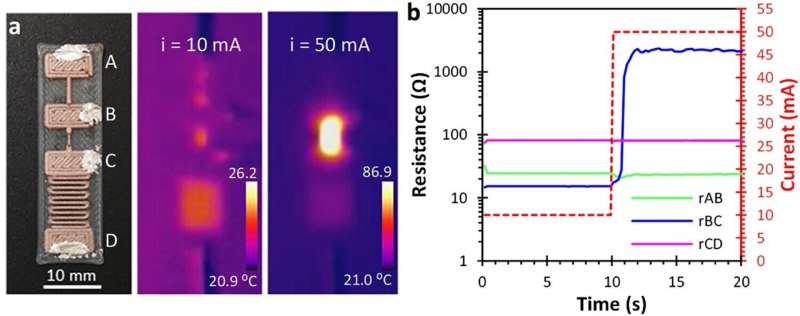
With potential applications in everything from motor control to on-demand hardware production, this technology could democratize electronics fabrication for businesses, labs, and homes worldwide.

MIT researchers have made a significant breakthrough in electronics by demonstrating the ability to 3D print resettable fuses, key components of active electronics that typically require semiconductors. This marks an important step towards semiconductor-free electronics manufacturing, potentially democratizing electronics production for businesses, labs, and even homes.
Traditional active electronics rely on semiconductor devices, which are costly and require advanced fabrication techniques limited to specialized facilities. The COVID-19 pandemic exposed the vulnerabilities of this model, as the semiconductor shortage led to increased costs and widespread disruption across industries. The team’s 3D printing approach could offer a way to bypass these limitations.
The team’s resettable fuses, made from a biodegradable polymer doped with copper nanoparticles, perform similarly to semiconductor transistors. While they don’t yet match the performance of silicon transistors, they show promise for basic control operations, such as regulating electric motors. The devices can be fabricated using standard 3D printing equipment, offering a simpler and more energy-efficient alternative to traditional semiconductor manufacturing. The researchers mentiond that this technology is about pushing 3D printing into new territories, democratizing the ability to create smart hardware outside traditional manufacturing centers.
Interestingly, the project grew out of unrelated research involving magnetic coils. The researchers discovered that the polymer material they were using exhibited a spike in resistance when heated by an electric current, mimicking the behavior of transistors. This phenomenon, likely caused by copper particles spreading under heat, enabled the team to create the 3D-printed switches. While there are limitations in scale compared to current silicon transistors, the potential applications are broad. The team aims to push the boundaries of this technology, including the development of more complex circuits and fully functional 3D-printed electronics, such as magnetic motors.










